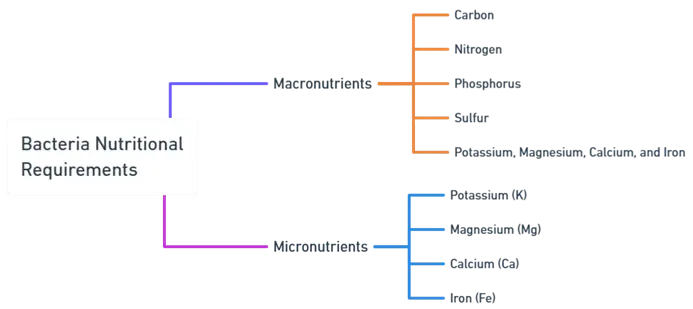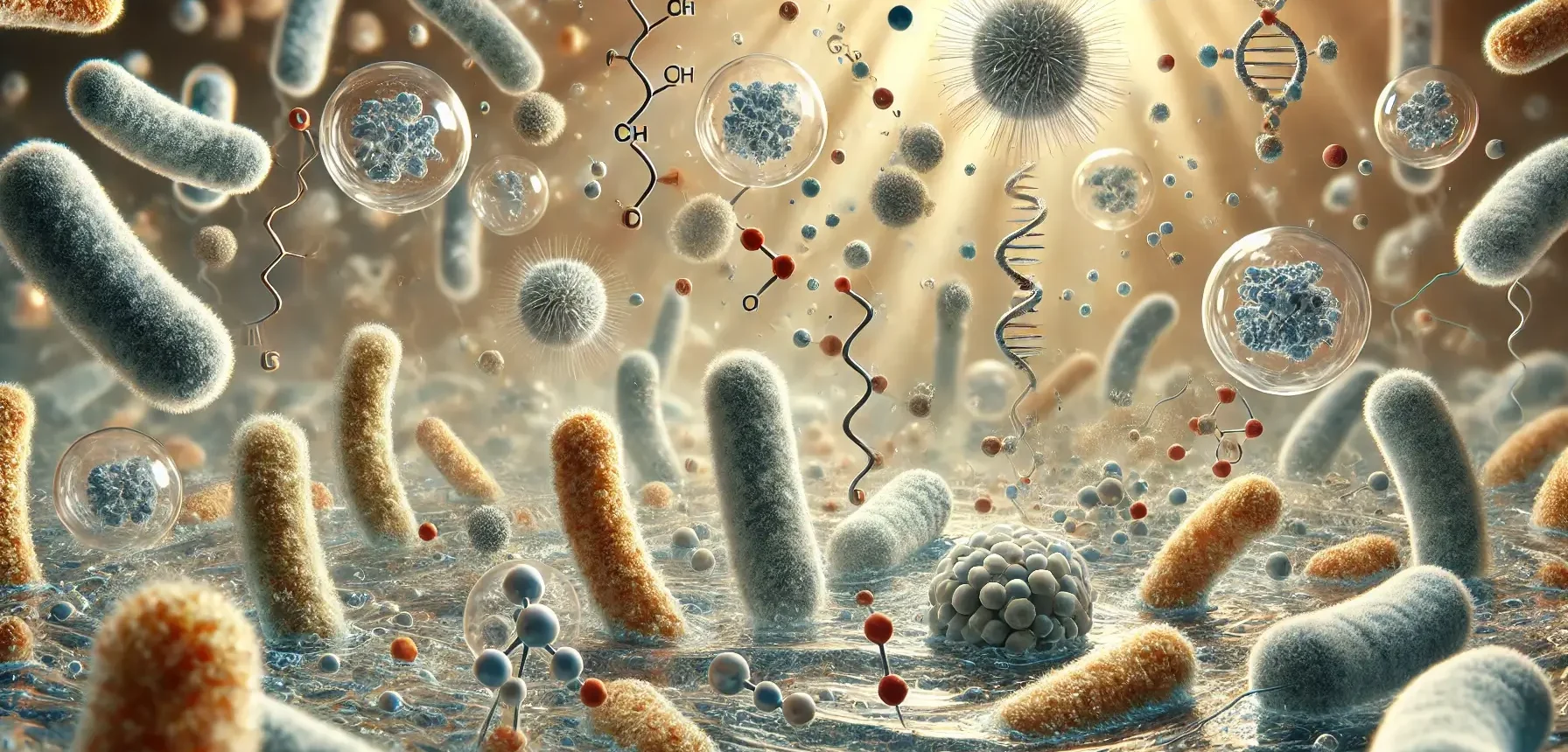- Nutritional Requirements of Bacteria is like all living organisms, require a variety of nutrients to grow and reproduce.
- These nutrients can be categorized into macronutrients and micronutrients.

This is a sample ad placement!
Macronutrients:
- Macronutrients are nutrients needed in large amounts for energy and growth—carbohydrates, proteins, and fats.
-
Carbon:
- Fundamental for cellular structure and energy. Sources include carbohydrates, lipids, proteins, and carbon dioxide.
-
Nitrogen:
- Essential for amino acids, nucleotides, and other cellular constituents. Sources include ammonia, nitrate, nitrogen gas (for nitrogen-fixing bacteria), and organic nitrogen compounds.
-
Phosphorus:
- Required for nucleic acids, phospholipids, ATP. Common source is phosphate.
-
Sulfur:
- Important for amino acids (cysteine and methionine) and coenzymes. Sources include sulfate and sulfur-containing amino acids.
-
Potassium, Magnesium, Calcium, and Iron:
- Serve various roles in enzyme activation, cellular structure, and electron transport.
This is a sample ad placement!
Micronutrients
Micronutrients are nutrients needed in small amounts for body functions—vitamins and minerals.
- Potassium (K): Enzyme activation and cellular functions.
- Magnesium (Mg): Stabilizes ribosomes, membranes, and nucleic acids; involved in enzyme reactions.
- Calcium (Ca): Important for cell wall stability and spore formation.
- Iron (Fe): Essential for electron transport proteins and enzymes.
This is a sample ad placement!
Growth Factors
- Vitamins: Often function as coenzymes in metabolic pathways.
- Amino Acids: Required for protein synthesis.
- Purines and Pyrimidines: Needed for nucleic acid synthesis.
Classification of Bacteria by Energy Sources

-
Phototrophs:
- Energy Source: Light
- Example: Cyanobacteria (photosynthetic bacteria that use light energy to produce organic compounds).
-
Chemotrophs:
- Energy Source: Chemical compounds
- Subtypes:
-
Chemoautotrophs (Lithotrophs):
- Energy Source: Inorganic chemicals (e.g., hydrogen sulfide, ammonia)
- Example: Nitrosomonas (oxidizes ammonia to nitrite)
-
Chemoheterotrophs (Organotrophs):
- Energy Source: Organic compounds
- Example: Escherichia coli (uses glucose and other organic molecules for energy).
-
-
Autotrophs:
- Carbon Source: Carbon dioxide
- Example: Nitrifying bacteria (convert ammonia into nitrates, using carbon dioxide for their carbon source).
-
Heterotrophs:
- Carbon Source: Organic compounds
- Example: Lactobacillus (uses organic molecules like lactose as both carbon and energy sources).
This is a sample ad placement!
| Type | Energy Source | Carbon Source | Example |
| Phototrophs | Light | CO2 or organic | Cyanobacteria (photoautotroph) |
| Chemotrophs | Inorganic/Organic chemicals | CO2 or organic | Nitrosomonas (chemoautotroph) |
| Chemoautotrophs | Inorganic chemicals | CO2 | Thiobacillus |
| Chemoheterotrophs | Organic compounds | Organic compounds | Escherichia coli |
| Photoautotrophs | Light | CO2 | Cyanobacteria |
| Photoheterotrophs | Light | Organic compounds | Purple non-sulfur bacteria |
Above is the detailed explanation of Nutritional Requirements of Bacteria in simplified manner.
Thank you for reading from Firsthope's notes, don't forget to check YouTube videos!

